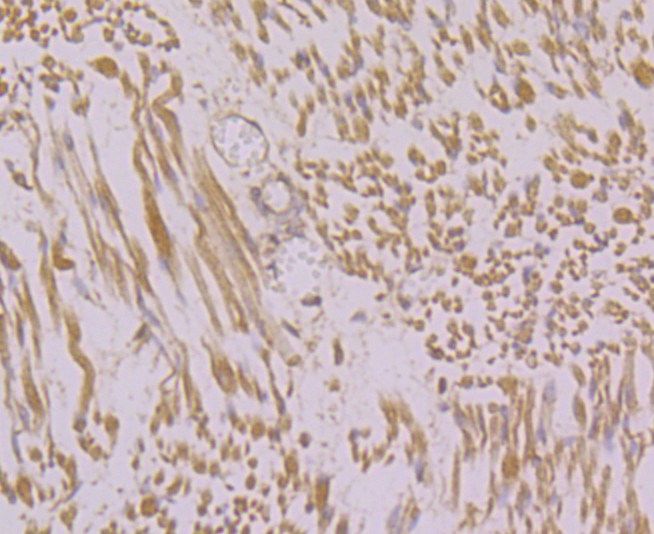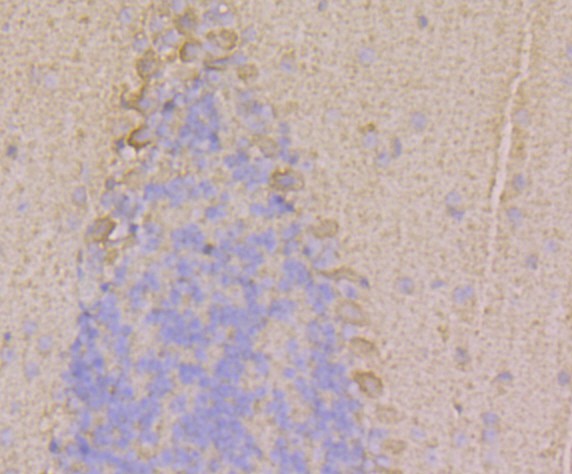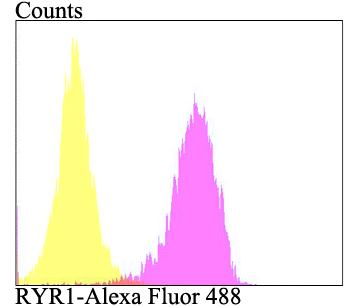-
Product Name
Anti-RYR1 antibody
- Documents
-
Description
Rabbit polyclonal antibody to RYR1
-
Tested applications
Dot blot, IHC-P, FC
-
Species reactivity
Human, Mouse
-
Alternative names
CCO antibody; MHS antibody; RYR antibody; MHS1 antibody; RYDR antibody; SKRR antibody; RYR-1 antibody; PPP1R137 antibody
-
Isotype
Rabbit IgG
-
Preparation
This antigen of this antibody was synthetic peptide within human ryr1 aa 1350-1400.
-
Clonality
Polyclonal
-
Formulation
Liquid, 1*PBS (pH7.4), 0.2% BSA, 50% Glycerol. Preservative: 0.05% Sodium Azide.
-
Storage instructions
Store at +4℃ after thawing. Aliquot store at -20℃. Avoid repeated freeze / thaw cycles.
-
Applications
Dot Blot: 1:500-1:1,000
IHC-P: 1:50-1:200
FC: 1:50-1:100
-
Validations

Fig1: Dot blot analysis of anti-RYR1 immunization peptide on PVDF. 1ug, 2ug and 4ug peptides were given in this test. Anti-RYR1 antibody was diluted with 1/500.

Fig2: Immunohistochemical analysis of paraffin-embedded human fetal skeletal muscle tissue using anti-RYR1 antibody. Counter stained with hematoxylin.

Fig3: Immunohistochemical analysis of paraffin-embedded mouse cerebellum tissue using anti-RYR1 antibody. Counter stained with hematoxylin.

Fig4: Flow cytometric analysis of SiHa cells with RYR1 antibody at 1/100 dilution (fuchsia) compared with an unlabelled control (cells without incubation with primary antibody; yellow). Alexa Fluor 488-conjugated goat anti-rabbit IgG was used as the secondary antibody.
- Background
-
References
- Tilgen N et al. Identification of four novel mutations in the C-terminal membrane spanning domain of the ryanodine receptor 1: association with central core disease and alteration of calcium homeostasis. Hum Mol Genet 10:2879-2887 (2001).
- Monnier N et al. Correlations between genotype and pharmacological, histological, functional, and clinical phenotypes in malignant hyperthermia susceptibility. Hum Mutat 26:413-425 (2005).
Related Products / Services
Please note: All products are "FOR RESEARCH USE ONLY AND ARE NOT INTENDED FOR DIAGNOSTIC OR THERAPEUTIC USE"
